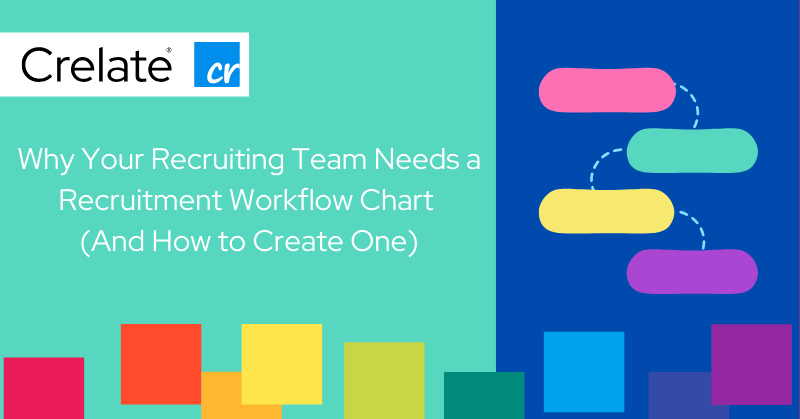
Your team’s workflow is critical in the high-stakes world of executive search, where the proper placement can make or break client relationships. It’s not just about moving candidates from point A to point B—it’s about optimizing every step to deliver results efficiently and effectively.
A clear workflow ensures consistency, reduces errors, and boosts your team’s productivity, making it a non-negotiable for executive recruiting agencies. Tools like multi-measure assessments can refine this process by offering more profound insights into candidate strengths, leadership styles, and cultural alignment. To explore how these assessments can elevate your executive search, visit this Forbes article.
Let’s dive into why workflows matter and how to create one that works for your team, spotlighting how customizable systems like Crelate can take your operations to the next level.
Why Workflows Matter in Executive Search
In executive search, where the stakes are higher than ever, a clear workflow provides:
- Consistency Across Processes: A structured workflow ensures every recruiter follows the same steps, reducing inconsistencies that can lead to client dissatisfaction or missed opportunities.
- Increased Efficiency: Automating repetitive tasks, such as candidate follow-ups or interview scheduling, frees your team to focus on building relationships and closing deals.
- Improved Collaboration: With a shared roadmap, recruiters and operations teams can work cohesively, avoiding bottlenecks and enhancing client and candidate experiences.
A customizable workflow ensures that your processes align with your agency’s needs. This is particularly important when your team handles complex executive search assignments with multiple stakeholders. Enhancing the candidate experience is critical to maintaining strong relationships and securing top talent.
According to SHRM, clear communication, timely follow-ups, and a structured hiring process significantly impact candidate satisfaction. By integrating a well-defined workflow with best practices for candidate experience, executive search firms can build long-term credibility and improve placement success rates.
How to Build and Implement a Clear Workflow
Creating a robust workflow doesn’t happen overnight, but following these steps will set your team up for long-term success:
1. Map Out Your Current Process
Identify every step in your recruiting process, from sourcing to placement. Include the tools you use and the pain points your team experiences.
Example: Are recruiters losing track of candidate statuses? This could point to a need for better tracking tools.
2. Define Key Workflow Stages
Establish clear stages for your pipeline, such as:
- Sourcing
- Screening
- Client Submittal
- Interviews
- Offer Negotiation
- Placement
Customize these stages to align with your agency’s focus, like retained executive search or high-volume placements.
3. Incorporate Automation
Use recruitment software to automate manual tasks:
- Sending interview reminders
- Generating client reports
Automation reduces admin time, allowing recruiters to focus on nurturing client relationships. However, it’s essential to implement automation thoughtfully. As highlighted in Harvard Business Review’s article “Algorithms Are Making Economic Inequality Worse,” over-reliance on automation can introduce bias and unintended consequences if not carefully managed. Recruitment software should enhance human decision-making rather than replace it, ensuring fair and accurate candidate evaluations.
4. Enhance Team Collaboration
Implement centralized tools to streamline communication. Systems like Crelate allow team members to track candidate progress and seamlessly share updates.
Example: Crelate’s integration tools allow you to sync calendars, emails, and other platforms to avoid missing follow-ups.
5. Set KPIs and Monitor Performance
Identify metrics to track success, such as time-to-fill, candidate satisfaction, and client retention rates. Use real-time reporting to make data-driven adjustments.
Regularly evaluate your workflow to ensure it scales as your agency grows.
6. Train Your Team
Introduce new workflows with proper training. Systems like Crelate make adoption easier with user-friendly dashboards and tailored onboarding support.
How Crelate Can Elevate Your Workflow
Customizability is crucial for workflows in executive search, where no two assignments are the same. Crelate’s recruitment platform offers tools designed to adapt to your agency’s needs:
- Tailored Pipelines: Define custom workflow stages and automate processes to mirror your agency’s operations.
- Intuitive Dashboards: Equip your team with personalized views to prioritize tasks and manage candidates efficiently.
- Integrated Systems: Seamlessly sync with tools like email, calendars, and job boards to create a unified recruiting ecosystem.
- Actionable Analytics: Use real-time insights to identify bottlenecks, track performance, and refine your process.
Integrating multi-measure assessments into your workflow can comprehensively evaluate candidates’ leadership styles, skills, and cultural fit, ensuring your placements align perfectly with client needs. This Forbes article explains how these assessments can enhance your executive search process.
Crelate transforms your recruiting ecosystem from a series of disconnected processes into a streamlined powerhouse, helping you focus on what truly matters: building relationships and closing high-value placements.
Conclusion
A clear workflow isn’t just a “nice-to-have” in executive search—it’s the foundation for success. You can optimize your recruiting journey by mapping your processes, embracing automation, and leveraging customizable tools like Crelate. Not only will this lead to better placements, but it will also strengthen client trust and improve team efficiency.
Ready to see how Crelate can help you streamline your executive search workflow?
Contact us today or Request a demo today and take the first step toward transforming your recruiting operations.
